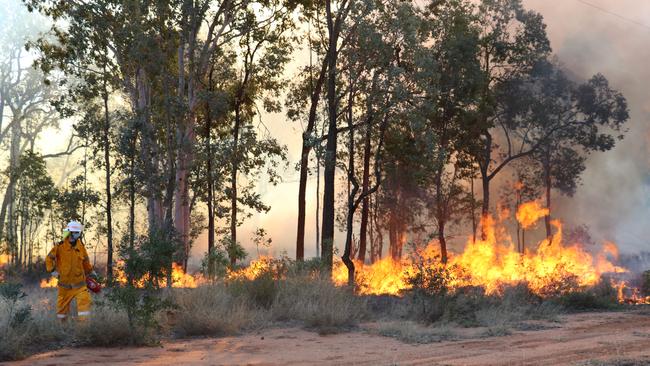Air quality fears cancelled, delayed hazard reduction burns
Air quality concerns forced scores of planned hazard reduction burns to be cancelled or delayed, exposing how difficult it could be to meet demands to dramatically increase future burns.
Scores of planned hazard reduction burns — including in areas where mega blazes later erupted — were cancelled or delayed due to air quality concerns, exposing how difficult it could be to meet demands to dramatically increase future burns.
It comes amid revelations the State government had been warned to increase hazard reduction seven years ago to “counteract increasing risk” from the effects of climate change.
The NSW Rural Fire Service (RFS), which works with National Parks during the autumn through to winter hazard reduction period, has told how it tries to juggle its schedule of prescribed burns with an ever-shrinking window of weather where they can be done safely.
Among burns reduced in size due to smoke considerations were some that had been scheduled around Putty, close to the region there the Gosper’s Mountain “mega blaze” erupted.

Air quality issues also affected another prescribed burn that had been planned for Bowen Mountain, where the Grose Valley fire later destroyed homes.
While the hazard reduction burn took place, it was reduced in size.
Other burns closer to Sydney that were postponed included those planned for Hawkesbury, Wiseman’s Ferry, Ku-ring-gai Chase, Dural and Pennant Hills.
NSW RFS spokesman, Inspector Ben Shepherd, said decisions on the timing of hazard reduction burns were made based on weather to reduce the smoke impact on residents.
MORE FROM LINDA SILMALIS:
Wipeout: First glimpse at true impact of bushfires
Eddie Obeid enjoys first holiday since jail release
People directly affected by smoke included asthma sufferers and the elderly, although complaints are regularly made by local residents when burns occur.
“We speak with National Parks weekly during the hazard reduction season about the burns planned and the impact of smoke,” Mr Shepherd said.
“We look to see if we can change the lighting pattern to reduce the smoke impact.
“It is challenging. Weather events such as inversions are a major problem, and are hard to predict.”

Nationals leader John Barilaro has laid the blame on his own State government’s Planning Industry and Environment Department for failing to conduct enough hazard reduction, despite the agency exceeding its rolling target of 135,000 hectares in 2019.
It can revealed an Independent Hazard Reduction Audit Panel report into hazard reduction conducted in 2013 warned that while hazard reduction was “not a panacea” for bushfires, areas burned should be increased.
“Increases in fuel reduction will be required to counteract increasing risk that is likely to arise from climate change,” it said.
Nicholas Gellie — one of Australia’s leading bushfire experts — said hazard reduction was only one tool in managing fire with its effectiveness limited on extreme fire days.
“You don’t need much surface fuel to sustain a crown fire,” Mr Gellie said.
“Fuel moisture of less than three per cent and winds in excess of 25km/h combined with dead and green fuels at wilting point produce crown fires.
“Rough-barked eucalypts help sustain a crown fire even in low surface fuels.”

Mr Gellie, who has presented at international fuel management conferences while also giving expert advice to government bushfire inquiries, described hazard reduction as a complex process that was highly reliant on moisture levels of vegetation and weather.
Too much moisture, as was often the case in autumn and winter, and some types of vegetation simply failed to burn.
Burning an area too much could also have the effect of replacing “wetter” plants with higher moisture loads with more flammable species.
While hazard reduction had a role to play in reducing the intensity of bushfires, Mr Gellie said the shrinking window in which to conduct burns meant other measures such as greater “fireproofing” of homes was critical.
Originally published as Air quality fears cancelled, delayed hazard reduction burns
